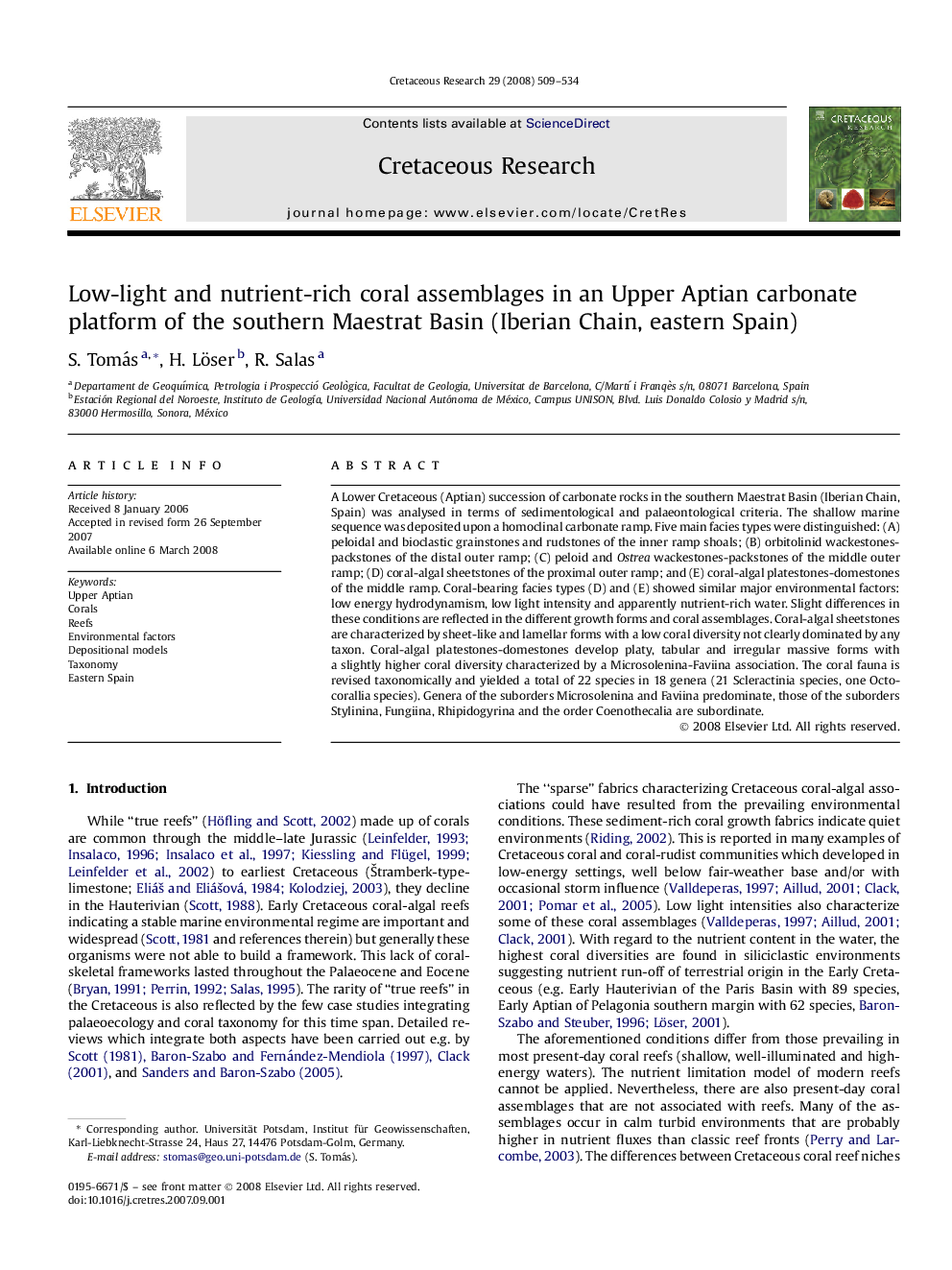| Article ID | Journal | Published Year | Pages | File Type |
|---|---|---|---|---|
| 4747683 | Cretaceous Research | 2008 | 26 Pages |
Abstract
A Lower Cretaceous (Aptian) succession of carbonate rocks in the southern Maestrat Basin (Iberian Chain, Spain) was analysed in terms of sedimentological and palaeontological criteria. The shallow marine sequence was deposited upon a homoclinal carbonate ramp. Five main facies types were distinguished: (A) peloidal and bioclastic grainstones and rudstones of the inner ramp shoals; (B) orbitolinid wackestones-packstones of the distal outer ramp; (C) peloid and Ostrea wackestones-packstones of the middle outer ramp; (D) coral-algal sheetstones of the proximal outer ramp; and (E) coral-algal platestones-domestones of the middle ramp. Coral-bearing facies types (D) and (E) showed similar major environmental factors: low energy hydrodynamism, low light intensity and apparently nutrient-rich water. Slight differences in these conditions are reflected in the different growth forms and coral assemblages. Coral-algal sheetstones are characterized by sheet-like and lamellar forms with a low coral diversity not clearly dominated by any taxon. Coral-algal platestones-domestones develop platy, tabular and irregular massive forms with a slightly higher coral diversity characterized by a Microsolenina-Faviina association. The coral fauna is revised taxonomically and yielded a total of 22 species in 18 genera (21Â Scleractinia species, one Octocorallia species). Genera of the suborders Microsolenina and Faviina predominate, those of the suborders Stylinina, Fungiina, Rhipidogyrina and the order Coenothecalia are subordinate.
Related Topics
Physical Sciences and Engineering
Earth and Planetary Sciences
Palaeontology
Authors
S. Tomás, H. Löser, R. Salas,
